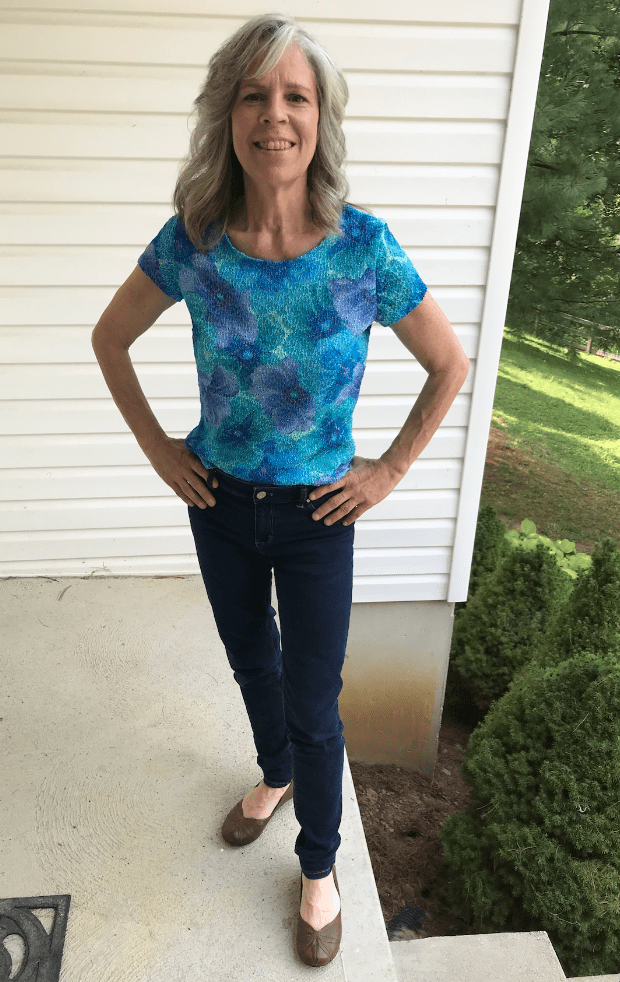
The experience of persistent exhaustion that defies adequate rest affects millions worldwide. Despite sleeping eight hours, many individuals face brain fog, depleted energy reserves, and the frustrating inability to sustain daily activities. This modern epidemic of chronic fatigue often stems from deeper cellular dysfunction—specifically, compromised mitochondrial energy production and dysregulated stress response systems. Recent clinical research reveals how specific standardized adaptogens, particularly Cordyceps CS-4 and KSM-66 Ashwagandha, may offer scientifically-supported assistance for these underlying mechanisms.
Understanding the Science Behind Adaptogenic Energy Support
Adaptogens represent a unique class of botanical compounds that help the body adapt to various stressors while maintaining homeostasis. Unlike generic supplements that simply provide nutrients, standardized adaptogenic extracts like KSM-66 Ashwagandha and Cordyceps CS-4 work through specific molecular pathways to enhance cellular energy production and stress resilience.
Research published in PubMed Central suggests that adaptogens may help preserve cellular energy stores. One proposed mechanism involves the modulation of stress response pathways that affect cellular ATP levels¹. This fundamental action suggests adaptogens may help maintain energy reserves rather than allowing them to be depleted by stress responses.
The distinction between standardized extracts and generic supplements proves crucial for therapeutic efficacy. The NIH Office of Dietary Supplements specifically notes that clinical studies demonstrating benefits used “250 to 600 mg/day as a root extract standardized to 5% withanolides”², highlighting the importance of using clinically-validated forms rather than undefined herbal preparations.
Cordyceps: Supporting ATP Production
Cordyceps sinensis, particularly in its standardized CS-4 form, has been studied for its effects on cellular energy production. Research from the Journal of Alternative and Complementary Medicine found that “supplementation with Cs-4 (Cordyceps sinensis) improves exercise performance and might contribute to wellness in healthy older subjects”³.
The mechanism appears to center on mitochondrial ATP synthesis. Studies in mice showed increases in ATP:Pi ratios in the liver of animals treated with Cs-4 compared with placebo³. While human studies are still developing, this research suggests potential enhancement in cellular energy production, with one study noting improvements in metabolic threshold after 12 weeks of supplementation³.
BioMed Central’s Chinese Medicine journal notes that Cordyceps has traditionally been “regarded as a tonifying herb” and research suggests it may support “mitochondrial ATP generation” and cellular immune responses⁴. This combination may address both energy concerns and immune function often present in fatigue states.
Emerging research on molecular hydrogen therapy reveals complementary mechanisms for cellular health. Frontiers in Neurology reports that “Molecular hydrogen (H₂) ameliorates mitochondrial dysfunction by scavenging hydroxyl radicals”⁵. This protective effect on mitochondria may work alongside Cordyceps’ potential ATP-supporting properties.
KSM-66 Ashwagandha: Supporting Adrenal Balance
While Cordyceps targets energy production directly, KSM-66 Ashwagandha may help address the stress-response system that often underlies chronic exhaustion. A systematic review in Nutrients journal found that standardized Ashwagandha extract was associated with reductions in cortisol levels when administered at 300 mg twice daily⁶.
This cortisol regulation may be relevant for fatigue management. Research published in PubMed Central demonstrated reductions in cortisol in the Ashwagandha group⁷, with participants experiencing “greater reductions in morning cortisol” compared to placebo⁷.
The benefits may extend beyond stress hormones. Studies found “Ashwagandha intake was associated with an 18% greater increase in DHEA-S and 14.7% greater increase in testosterone compared to the placebo”⁸, with corresponding improvements reported in “fatigue, vigor, and sexual and psychological well-being”⁸.
The Dual-Action Approach: Addressing Root Causes
Chronic fatigue rarely stems from a single cause. Frontiers in Behavioral Neuroscience explains: “chronic low-grade inflammation induces and/or maintains persistent fatigue by inducing an imbalance between cellular-energy availability and cellular- and behavioral-energy expenditure”⁹. This understanding highlights why addressing both energy production and stress response may be more effective than targeting either alone.
The combination of Cordyceps and KSM-66 Ashwagandha may tackle this complexity through complementary mechanisms:
- Potential enhancement of ATP synthesis through improved mitochondrial function
- Possible reduction in energy waste via cortisol regulation
- May decrease oxidative stress protecting cellular energy systems
- Could improve stress resilience helping prevent energy depletion
Recent research suggests molecular hydrogen therapy may complement these benefits. Studies indicate “H₂ exerted ameliorative effects on acute and chronic fatigue”⁵, while a meta-analysis in Frontiers in Nutrition found evidence suggesting “H₂ supplementation alleviates fatigue” with reductions in fatigue markers¹⁰.
Targeting Brain Fog and Cognitive Exhaustion
Mental fatigue and brain fog often accompany physical exhaustion in chronic fatigue states. Research in adaptogens suggests they may “trigger the defense adaptive stress response” which could help with resilience to overload that induces brain fatigue¹¹.
Specifically regarding Ashwagandha, research indicates it may support recovery in patients with brain fatigue and could be helpful in rehabilitation contexts¹¹. This potential neuroregeneration support, combined with Cordyceps’ energy enhancement properties, may address both physical and cognitive aspects of chronic fatigue.
The Lourdes Hydrofix Premium Edition from Holy Hydrogen provides molecular hydrogen therapy through advanced separate-chamber electrolysis and VIVE™ Expanded Metal Technology, producing ultrafine super-nano hydrogen bubbles. This Japanese-engineered device delivers 99.9995% pure hydrogen, certified by Japan Food Research Laboratory for safety and purity, complementing adaptogenic benefits through its effects on mitochondrial function and oxidative stress reduction.
Evidence-Based Dosing and Implementation
Clinical research provides guidance on dosing for these standardized extracts:
KSM-66 Ashwagandha: Studies showing benefits used doses ranging from “250 to 600 mg/day as a root extract standardized to 5% withanolides”², typically divided into two daily doses. The NIH notes that improvements in sleep quality measures were observed in ashwagandha groups compared to placebo groups².
Cordyceps CS-4: The human trial demonstrating exercise performance improvements used CS-4 supplementation for 12 weeks³, suggesting that consistent, longer-term use may be beneficial for optimal results.
Research emphasizes the importance of choosing standardized, clinically-studied forms. Generic adaptogen products lacking standardization may not deliver the same cellular energy support demonstrated in published trials.
Creating Synergy: The Comprehensive Approach
Research reveals how chronic fatigue involves multiple interconnected systems—mitochondrial function, stress hormone balance, oxidative damage, and inflammation. Addressing these comprehensively through targeted interventions may offer greater potential for meaningful improvement than single-pathway approaches.
Molecular hydrogen therapy, as demonstrated through technologies like Holy Hydrogen’s Lourdes Hydrofix Premium Edition with its Multi-Layer Fibriform Polymer Membrane (MFPM) and lab-tested certification, works alongside adaptogens by protecting mitochondria from oxidative damage while these botanical compounds may enhance ATP production and stress resilience. This synergistic approach targets the cellular mechanisms underlying persistent exhaustion.
Conclusion
The scientific evidence supporting standardized adaptogens like Cordyceps CS-4 and KSM-66 Ashwagandha for chronic fatigue continues to develop. These compounds appear to work through distinct yet complementary mechanisms—potentially enhancing mitochondrial ATP production while supporting regulation of stress response systems that may deplete energy reserves.
Research suggests measurable improvements in energy metabolism, stress hormone balance, and fatigue markers when these standardized extracts are used at clinically-studied doses. The emerging understanding of how molecular hydrogen therapy complements these mechanisms opens possibilities for comprehensive cellular energy support.
For those seeking scientifically-grounded approaches to persistent exhaustion and brain fog, the combination of targeted adaptogenic compounds with complementary therapies represents a promising pathway based on current research.
Learn more about the science of mitochondrial health and cellular energy optimization through our comprehensive wellness resources.
Disclaimer: These statements have not been evaluated by the FDA. Holy Hydrogen does not make any medical claims or give any medical advice. This content is for educational purposes only and should not replace professional medical consultation.
References
- https://pmc.ncbi.nlm.nih.gov/articles/PMC3991026/
- https://ods.od.nih.gov/factsheets/Ashwagandha-HealthProfessional/
- https://pmc.ncbi.nlm.nih.gov/articles/PMC3110835/
- https://pmc.ncbi.nlm.nih.gov/articles/PMC1847515/
- https://www.frontiersin.org/journals/neurology/articles/10.3389/fneur.2022.841310/full
- https://www.mdpi.com/2072-6643/15/24/5015
- https://pmc.ncbi.nlm.nih.gov/articles/PMC6750292/
- https://pmc.ncbi.nlm.nih.gov/articles/PMC6438434/
- https://www.frontiersin.org/journals/behavioral-neuroscience/articles/10.3389/fnbeh.2018.00078/full
- https://www.frontiersin.org/journals/nutrition/articles/10.3389/fnut.2023.1094767/full
- https://pmc.ncbi.nlm.nih.gov/articles/PMC12128733/
The Creator of the Lourdes Hydrofix Story: Birth of a Miracle
When Takashi Hida's (creator of the Lourdes Hydrofix) daughter was born with Spinal Muscular Atrophy (SMA)—a devastating disease with a bleak prognosis—he faced a life-altering crisis. The condition, also known as Werdnig-Hoffmann disease, threatened to take her life within mere months and left Hida desperate to find a way to ease her suffering.

Disclaimer:
These statements have not been evaluated by the Food and Drug Administration (FDA). Holy Hydrogen products are not intended to diagnose, treat, cure, or prevent any disease. The information provided is for educational purposes only and is not a substitute for professional medical advice. Please consult your healthcare provider before beginning any new wellness regimen.
Any testimonials featured on this page reflect the real-life experiences and opinions of individual customers. However, individual results may vary.





